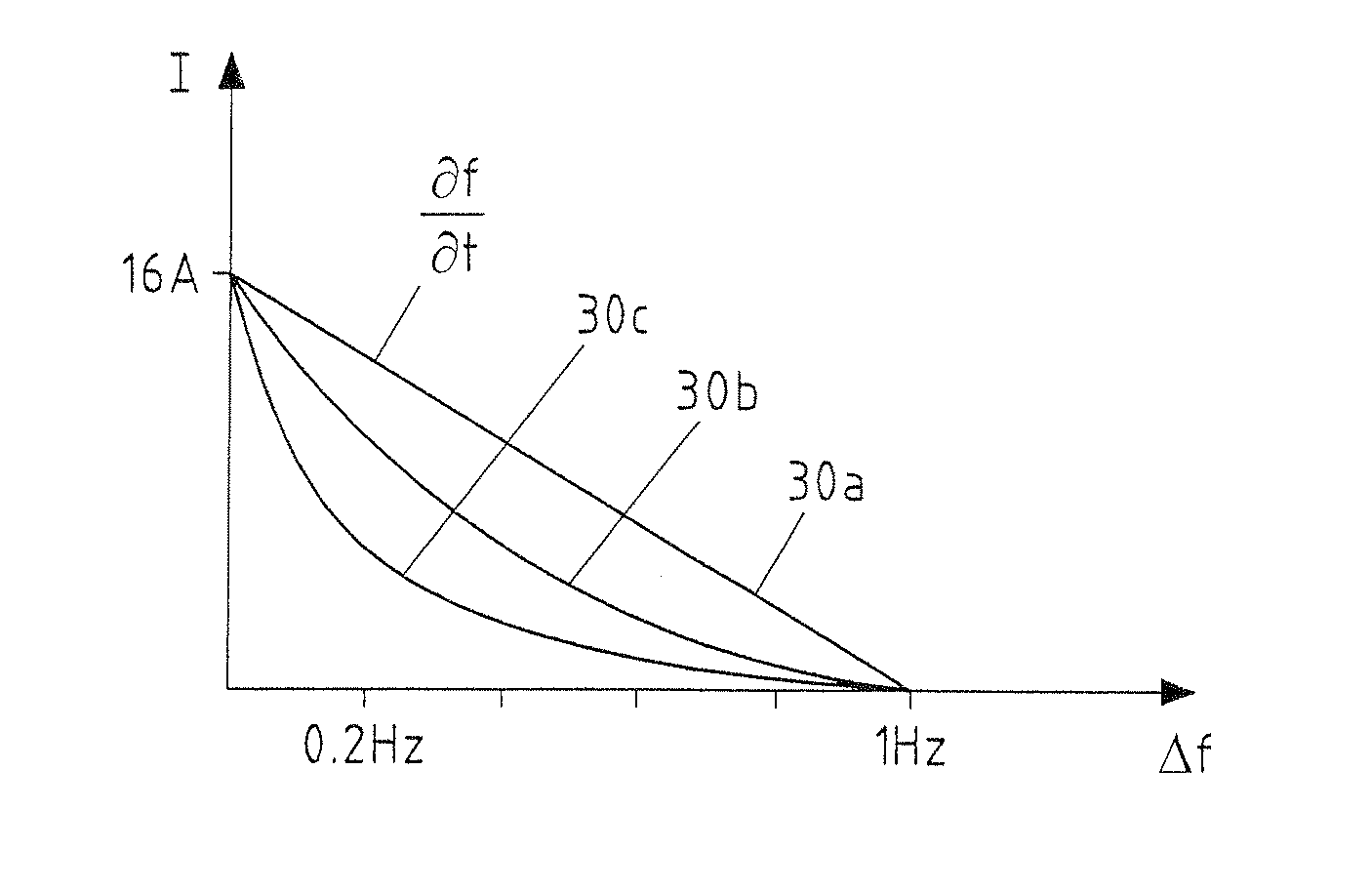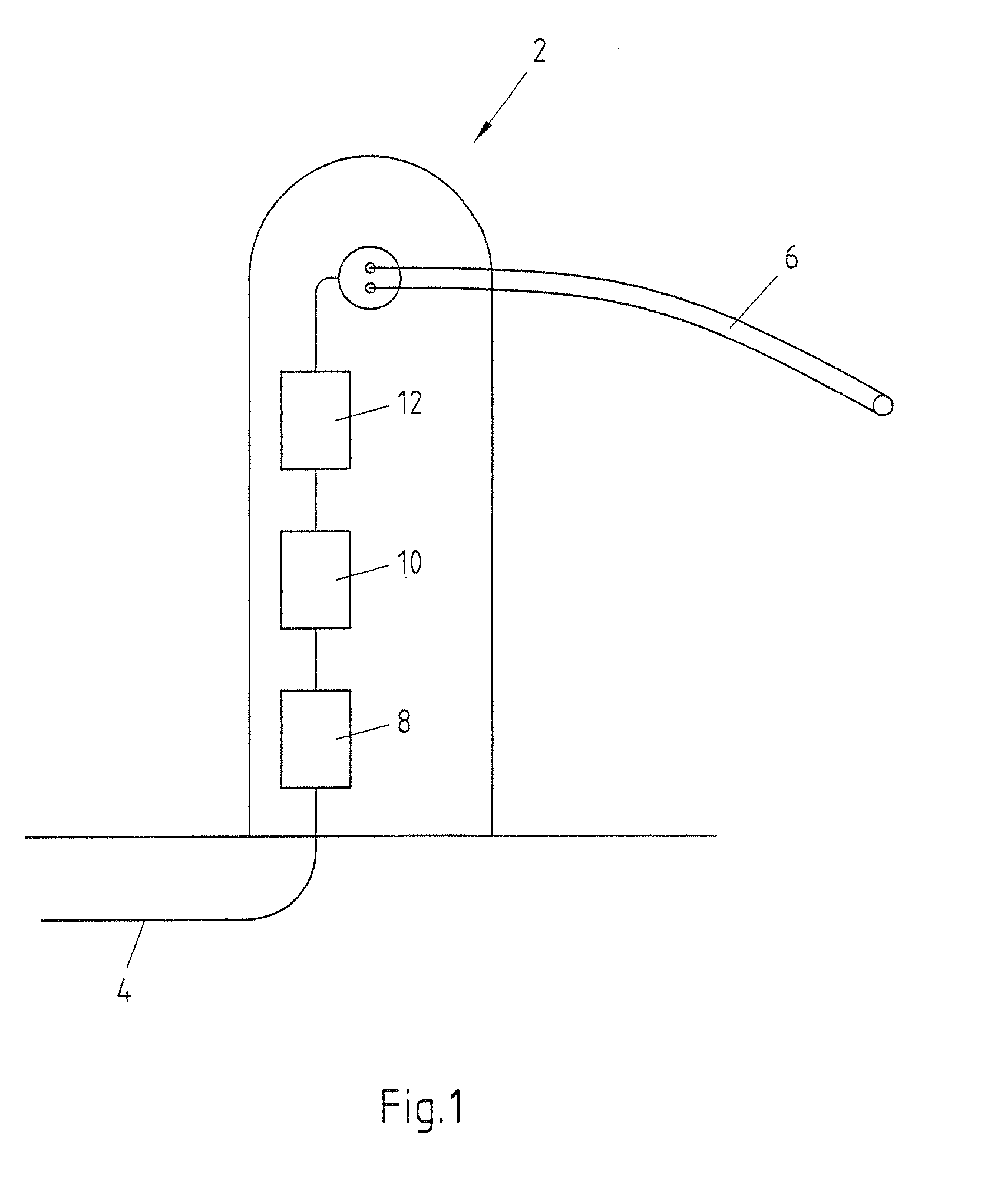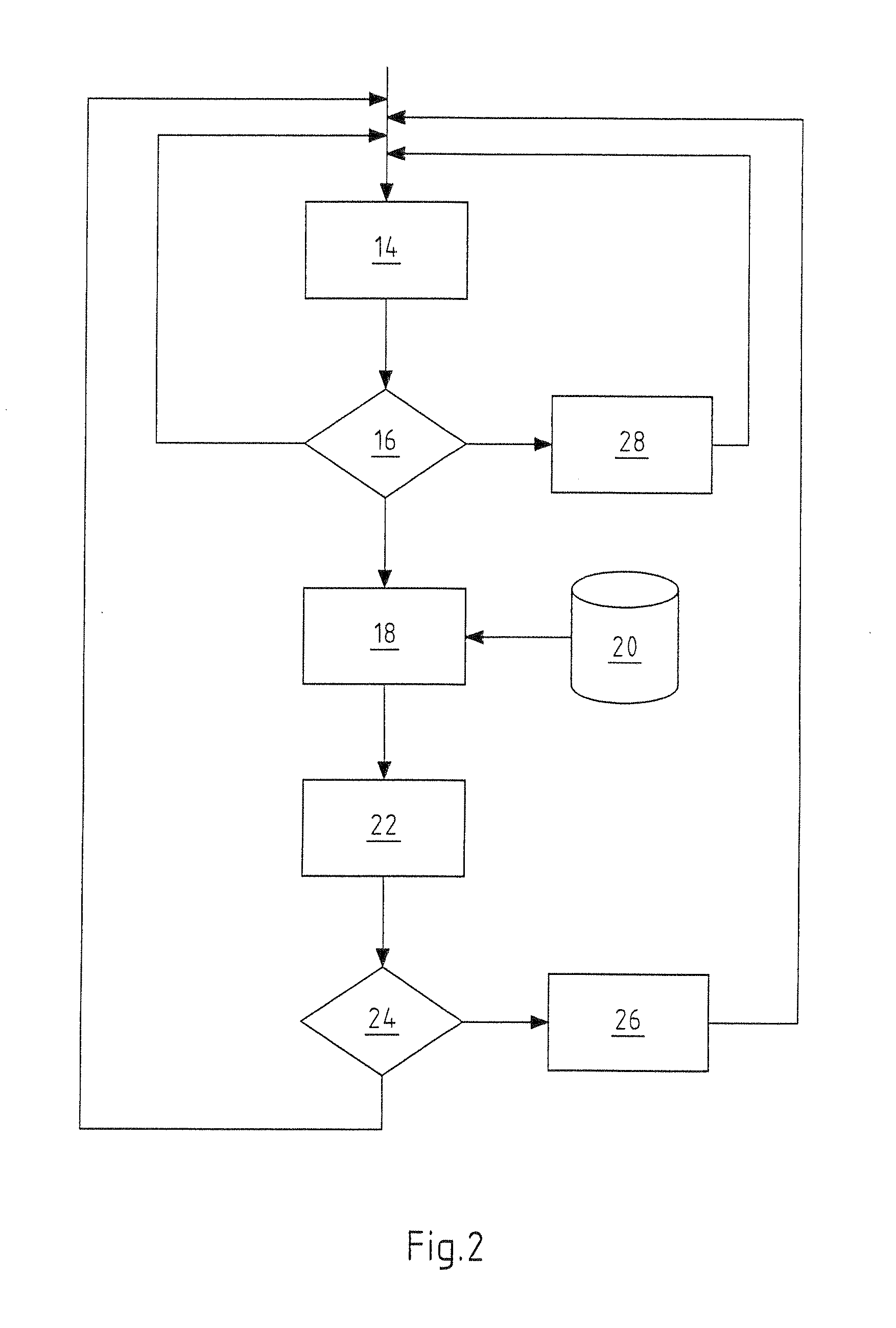Charging station for electric vehicles with network stabilization
a charging station and electric vehicle technology, applied in charging stations, electric vehicle charging technology, transportation and packaging, etc., can solve the problems of network under-supply, network stabilization not taking place, and under-frequency in supply networks, so as to reduce electrical power emitted, and reduce the effect of electrical power
- Summary
- Abstract
- Description
- Claims
- Application Information
AI Technical Summary
Benefits of technology
Problems solved by technology
Method used
Image
Examples
Embodiment Construction
[0030]FIG. 1 shows a charging station 2 for charging electric vehicles (not shown). The charging station 2 is connected by means of an energy cable 4 to an electrical energy supply network. The charging station 2 draws electrical power via the energy cable 4. The electrical power is provided to the electric vehicle by means of a charging cable 6. In the charging station 2, which in the present case is represented in purely diagrammatic form, is a network frequency measuring device 8. In addition to this, a load regulating device 10 and a load control circuit 12 are located in the charging station 2. The network frequency measuring device 8 is in operational connection with the load regulating device 10 such that, depending on the network frequency measured by the network frequency measuring device 8, the load regulating device 10 can control the load control circuit 12 in order to regulate the electrical power emitted to the electric vehicle via the charging cable 6. In this situati...
PUM
 Login to View More
Login to View More Abstract
Description
Claims
Application Information
 Login to View More
Login to View More - R&D
- Intellectual Property
- Life Sciences
- Materials
- Tech Scout
- Unparalleled Data Quality
- Higher Quality Content
- 60% Fewer Hallucinations
Browse by: Latest US Patents, China's latest patents, Technical Efficacy Thesaurus, Application Domain, Technology Topic, Popular Technical Reports.
© 2025 PatSnap. All rights reserved.Legal|Privacy policy|Modern Slavery Act Transparency Statement|Sitemap|About US| Contact US: help@patsnap.com



